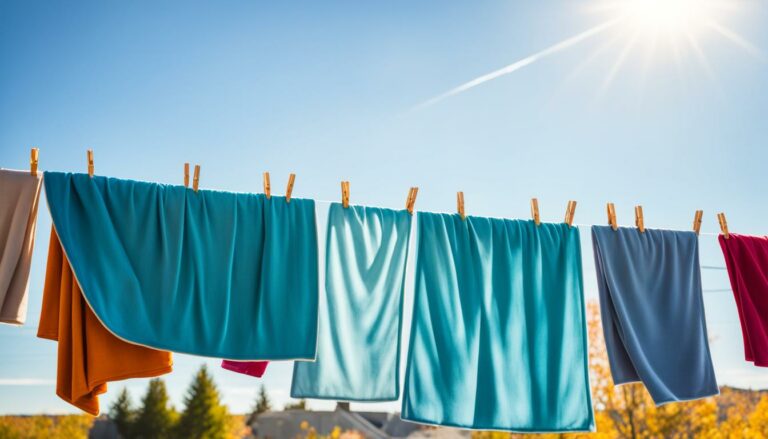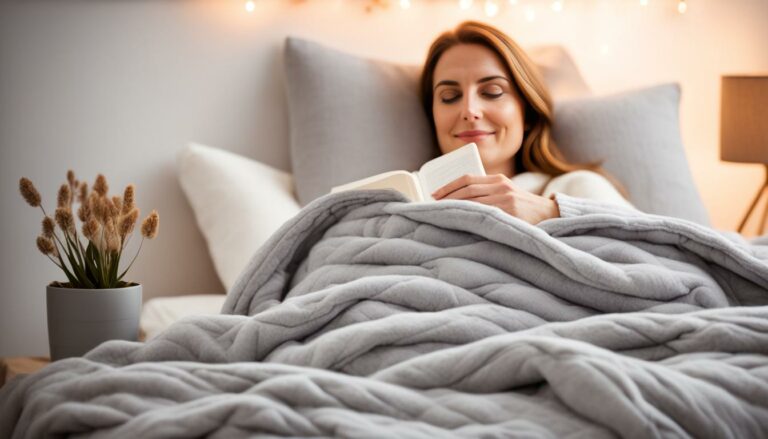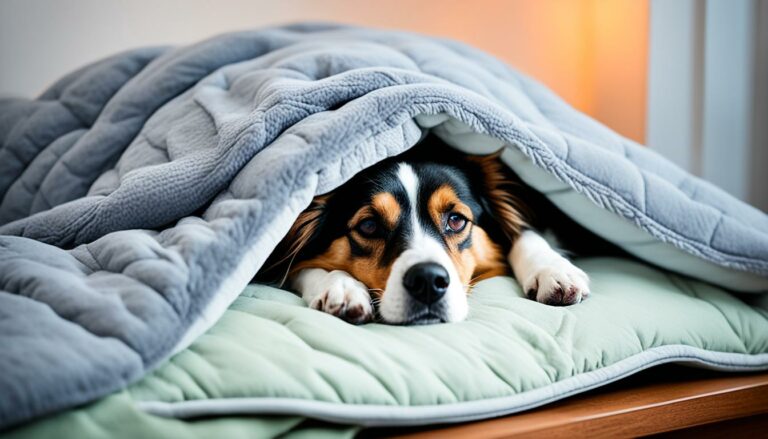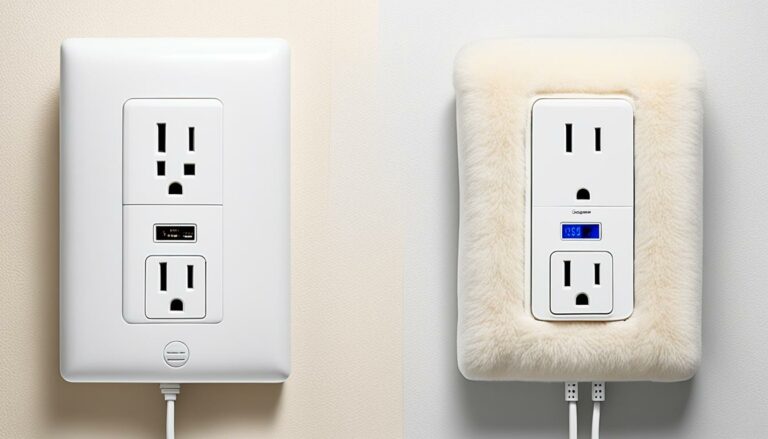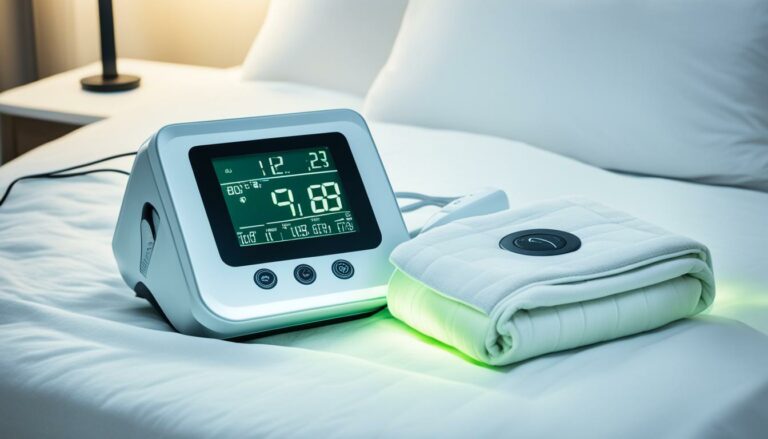Heated Blankets: High Electricity Usage?
Eric Christie stands as a luminary in the bedding industry, with a career spanning nearly four decades since the early 1980s. His journey through the world of bedding has seen him wear many hats – a manufacturer, designer, and retailer, showcasing his versatility and expertise in Read more...
pillowsandbedsheets.com and its partners may earn a commission if you purchase a product through one of our links
Are you concerned about the electricity usage of heated blankets? If so, you’re not alone. Many people wonder if using an electric blanket will significantly increase their energy consumption and drive up their electricity bills. In this article, we will explore the energy consumption of heated blankets, how they compare to other heating options, and provide important safety considerations to ensure a worry-free experience.
Key Takeaways:
- Electric blankets generally use less electricity than space heaters or central heating systems.
- The exact energy consumption of electric blankets depends on factors such as temperature settings and duration of use.
- Using an electric blanket for one hour consumes 30-50% less electricity than a 500-watt space heater and 15-25% less electricity than a 1,000-watt space heater.
- Electric blankets are considered cost-effective and energy-efficient alternatives for warming your bed during the winter.
- Important safety considerations include buying good-quality electric blankets with safety features, following manufacturer’s instructions, and avoiding damaged or worn-out blankets.
How Much Does it Cost to Run an Electric Blanket?
When it comes to energy consumption, electric blankets offer a cost-effective heating solution. Compared to space heaters, running an electric blanket consumes significantly less power. On average, using an electric blanket for one hour consumes 30-50% less electricity than a 500-watt space heater and 15-25% less electricity than a 1,000-watt space heater.
An electric blanket typically adds between 70 watts to your home’s power consumption per hour. This power consumption is relatively low in comparison to other heating devices. To put it into perspective, consider that using an electric blanket with 150 watts of power for 6 hours per night over 4 months would result in an annual consumption of 108 kilowatt-hours (kWh).
The exact cost of running an electric blanket depends on the kilowatt-hour (kWh) rate in your area. However, electric blankets are generally considered to be cost-efficient heating options that can help reduce your overall electricity bill.
So, if you’re looking for a way to stay warm during the colder months without breaking the bank, an electric blanket can be a smart and economical choice.
https://www.youtube.com/watch?v=TT7hcRCftWY
Types of Electric Blankets
When it comes to electric blankets, there are various types to choose from, each designed to cater to different needs and preferences. Let’s explore the different types of electric blankets available:
1. Electric Under-Blanket
The electric under-blanket is placed above the mattress and below the bottom sheet. This type of blanket is commonly used in countries like the UK. It is held in place by a fitted sheet and is best used on the lowest heating level. The electric under-blanket provides warmth from underneath and ensures a cozy and comfortable sleep experience.
2. Electric Over-Blanket
The electric over-blanket is more commonly used in the US. It goes above the top bed sheet and can cover the entire body from shoulder to leg. Made from soft fabrics, electric over-blankets are perfect for snuggling up and keeping warm on colder nights. Not only can they be used on beds, but they can also be used on sofas or carpets, providing warmth wherever you need it.
3. Heated Throws
Heated throws serve a dual purpose – they provide heat and function as stylish home decor. Available in various designs and colors, heated throws can complement your interior while keeping you warm and cozy. They are ideal for keeping your hands and feet warm while sitting on a couch or preheating beds before you retreat into their comfort.
Now that you know about the different types of electric blankets, you can choose the one that best suits your needs and preferences. Whether it’s an electric under-blanket, electric over-blanket, or a heated throw, these blankets offer versatility and warmth during the colder months.
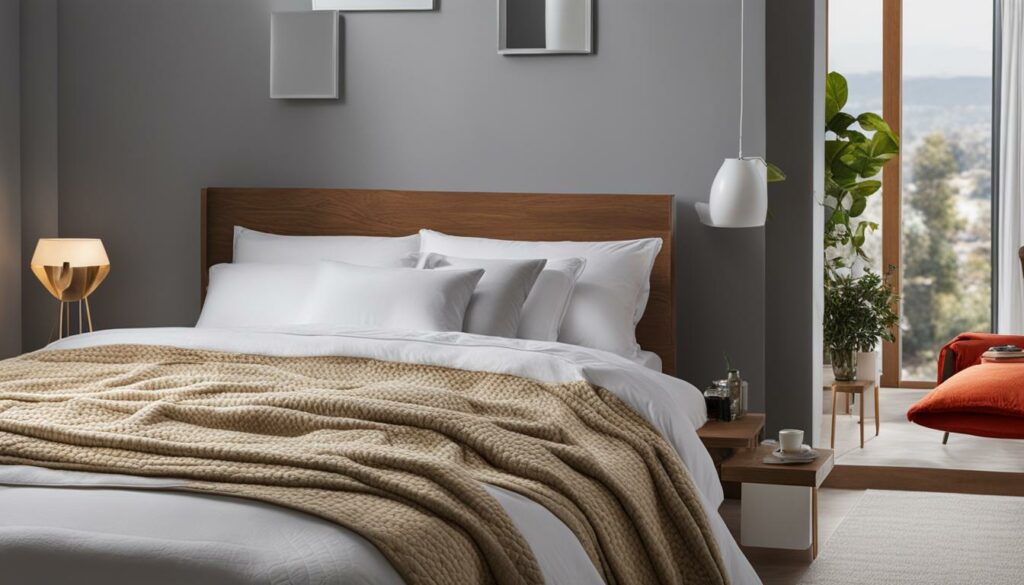
| Type of Electric Blanket | Description |
|---|---|
| Electric Under-Blanket | Placed above the mattress and below the bottom sheet. Best used on the lowest heating level. Provides warmth from underneath. |
| Electric Over-Blanket | Goes above the top bed sheet and can cover the entire body. Made from soft fabrics. Can be used on beds, sofas, or carpets. |
| Heated Throws | Serves as both a heat source and a stylish home decor element. Available in various designs and colors. Ideal for keeping hands and feet warm while sitting or preheating beds. |
Benefits of Using an Electric Blanket
Using an electric blanket can offer a range of advantages, including energy efficiency, pain relief, improved sleep quality, and mood enhancement. Let’s explore these benefits in detail:
Energy Efficiency of Heated Blankets
Electric blankets are energy-saving alternatives to traditional heating methods. By using an electric blanket to warm your bed during the winter months, you can reduce your overall electricity bills. Compared to space heaters or central heating systems, electric blankets consume less energy, making them a cost-effective option for staying warm and cozy.
Pain Relief from Heated Blankets
One of the remarkable benefits of electric blankets is their ability to alleviate muscle tightness, cramps, and discomfort. The gentle warmth generated by the heated blanket promotes relaxation, improves blood circulation, and helps to relieve pain. Whether you suffer from sore muscles, arthritis, or menstrual cramps, an electric blanket can provide soothing heat therapy right where you need it.
Better Sleep Quality with Electric Blankets
Sleep plays a crucial role in maintaining overall health and well-being. Electric blankets can contribute to better sleep quality by creating a comfortable and consistent sleeping environment. The warmth provided by the blanket promotes relaxation and can help you fall asleep faster. Additionally, electric blankets can help prevent disruptions to deep sleep caused by feeling too cold during the night.
Mood Improvement with Electric Blankets
Winter months can often bring feelings of melancholy and decreased mood. However, electric blankets can naturally lift your spirits and improve mood. The warmth and comfort they provide create a cozy and inviting atmosphere, promoting relaxation and reducing anxiety. Snuggling up under an electric blanket can be incredibly comforting and bring a sense of joy during colder seasons.
Experience the numerous benefits of using an electric blanket and enjoy energy-efficient warmth, pain relief, better sleep quality, and enhanced mood. Choose a high-quality electric blanket that suits your needs and preferences for a cozy and comforting winter season.
“Electric blankets provide energy-efficient warmth, pain relief, better sleep quality, and improved mood during the colder months.”
Benefits of Using an Electric Blanket
| Benefits | Description |
|---|---|
| Energy Efficiency | – Reduces overall electricity bills – Consumes less energy compared to space heaters or central heating systems |
| Pain Relief | – Alleviates muscle tightness, cramps, and discomfort – Improves blood circulation |
| Better Sleep Quality | – Creates a comfortable and consistent sleeping environment – Helps prevent disruptions to deep sleep caused by feeling too cold |
| Mood Improvement | – Naturally enhances mood and reduces anxiety during colder months – Creates a cozy and inviting atmosphere |

Safety Considerations for Electric Blankets
Safety is of utmost importance when it comes to using electric blankets. To ensure the safety of yourself and your loved ones, it is crucial to consider the following precautions:
- Buy Good-Quality Electric Blankets: When purchasing an electric blanket, look for reputable brands that meet safety guidelines and are made of fire-resistant materials. Investing in a high-quality product will minimize potential risks.
- Check for Safety Features: Opt for blankets equipped with automatic shut-off and overheat protection sensors. These features are essential in preventing potential fires and ensuring the safety of the users.
- Read and Follow Manufacturer’s Instructions: Familiarize yourself with the user manual provided by the manufacturer. Understanding the proper use and maintenance of your electric blanket is crucial for safe and efficient operation.
- Inspect Regularly: Regularly inspect your electric blanket for any signs of wear and tear, such as worn patches or exposed wires. If you notice any damage, it is important to discontinue use immediately and replace the blanket with a new one.
- Never Leave Unattended or Use on Wet Bedding: Never leave your electric blanket unattended while it is in use, and avoid using it on wet bedding or mattresses. Moisture can pose a significant safety hazard and increase the risk of electrical accidents.
By adhering to these safety considerations, you can minimize the risk of accidents and ensure the safe and enjoyable usage of your electric blanket.
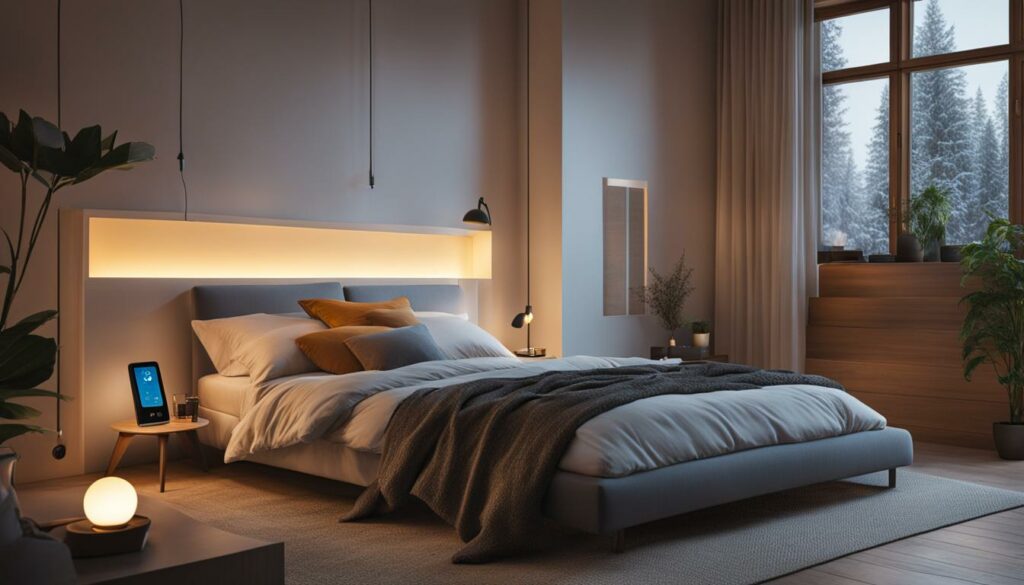
Remember, the safety of yourself and your loved ones should always be a top priority. Take the necessary precautions to avoid accidents and enjoy the warmth and comfort that electric blankets provide.
Electricity Consumption Comparison: Electric Blankets vs. Space Heaters
When it comes to electricity consumption, electric blankets are a more energy-efficient option compared to space heaters. Not only do they provide cozy warmth during cold winter nights, but they also consume less power, resulting in cost savings.
To understand the cost comparison between electric blankets and space heaters, let’s consider a specific scenario. Imagine using an electric blanket with a power consumption of 150 watts for 6 hours per night, over a period of 4 months. By doing some math, we can estimate the annual electricity consumption:
Power Consumption per night: 150 watts x 6 hours = 900 watt-hours or 0.9 kilowatt-hours (kWh)
Annual Consumption: 0.9 kWh x 30 days x 4 months = 108 kWh
It’s important to note that this is a general estimation, and actual electricity consumption may vary based on the specific model and usage habits.
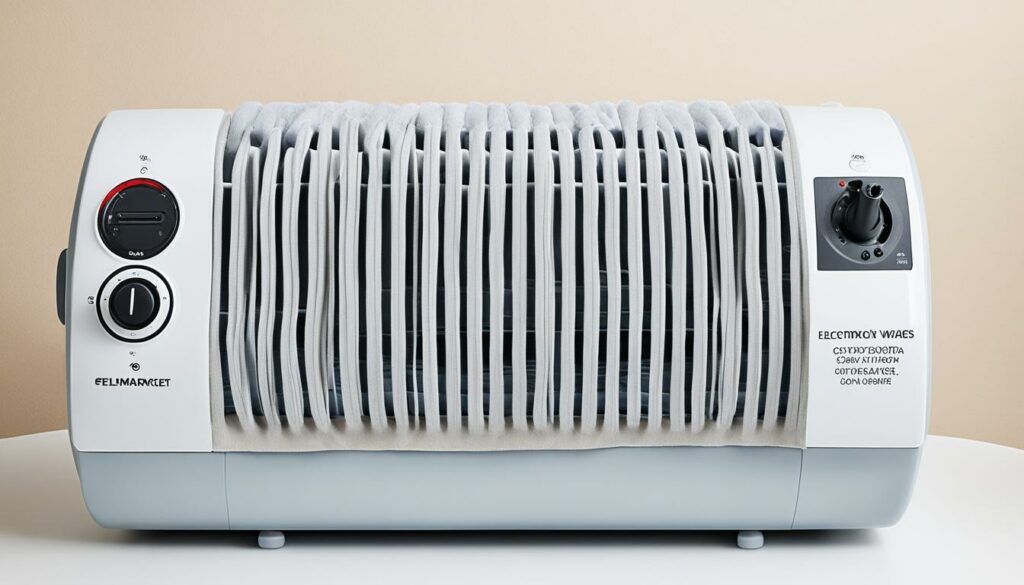
Now, let’s compare the electricity consumption to operating an electric heater. Space heaters typically have higher wattage. For example, a 500-watt space heater consumes more electricity per hour compared to an electric blanket. By using an electric blanket, you can potentially save 30-50% of electricity compared to a 500-watt space heater, and 15-25% of electricity compared to a 1,000-watt space heater.
Considering the average price per kWh in your area, the electricity cost of running an electric blanket for the entire winter season is generally more cost-effective compared to using electric heating methods for the same duration. Electric blankets provide a comfortable and efficient heating solution, allowing you to enjoy warmth while keeping your energy consumption and costs in check.
Tips for Using Electric Blankets Safely and Efficiently
When using electric blankets, it is important to prioritize safety and maximize energy efficiency. Follow these simple tips to ensure a safe and cozy experience:
1. Choose blankets with built-in safety features: Look for electric blankets that have overheat protection sensors and high energy star ratings. These features will automatically shut off the blanket if it becomes too hot, reducing the risk of fire or electric shock.
2. Handle with care: Avoid pinching or twisting the blanket, as this can damage the internal connections and potentially cause malfunctions or electrical hazards. Treat your electric blanket gently to ensure its longevity and safe operation.
3. Use on dry bedding and mattresses: Electric blankets should only be used on dry surfaces. Moisture can damage the electrical components and increase the risk of electric shock. Make sure your bedding and mattress are completely dry before using the electric blanket.
4. Supervise children’s usage: Never allow children to use electric blankets unsupervised. Children may not be able to understand or follow the safety precautions, so it’s crucial to monitor their usage to prevent accidents.
5. Practice energy conservation: To maximize energy efficiency, use the lowest necessary heat setting on your electric blanket. This not only helps reduce electricity consumption but also saves money on your energy bills. Avoid using multiple heating devices simultaneously to avoid unnecessary energy usage.
Following these safety tips and using electric blankets effectively will provide you with warmth and comfort while ensuring a safe and energy-efficient experience. Stay cozy and enjoy the benefits of your electric blanket!
FAQ
Does a heated blanket use a lot of electricity?
Electric blankets generally use less electricity than space heaters or central heating systems. They typically add between 70 watts to your home’s power consumption per hour, making them a cost-effective heating option.
How much does it cost to run an electric blanket?
The exact cost of running an electric blanket depends on the kilowatt-hour (kWh) rate in your area. However, they are generally considered to be cost-efficient heating options compared to other devices. Using an electric blanket for one hour consumes 30-50% less electricity than a 500-watt space heater and 15-25% less electricity than a 1,000-watt space heater.
What are the types of electric blankets available?
There are different types of electric blankets available. Electric under-blankets are placed above the mattress and below the bottom sheet. Electric over-blankets go above the top bed sheet and can cover the entire body. Heated throws serve a double purpose as they provide warmth and can be used as part of home decor.
What are the benefits of using an electric blanket?
Electric blankets are energy-efficient options for warming your bed during the winter, helping reduce overall electricity bills. They can also provide pain relief for muscle tightness and cramps, improve circulation, enhance sleep quality, and naturally improve mood and reduce anxiety.
What safety considerations should I keep in mind when using an electric blanket?
It is important to buy good-quality electric blankets that meet safety guidelines for fire resistance and have automatic shut-off and overheat protection sensors. It is crucial to read and follow the manufacturer’s instructions for proper use and maintenance. Avoid using electric blankets with worn patches or exposed wires, and never leave them unattended or used on wet bedding.
How does electricity consumption compare between electric blankets and space heaters?
Electric blankets are more energy-efficient than space heaters. The cost of running an electric blanket for an extended period is typically lower compared to operating an electric heater. Using an electric blanket for the entire winter season is more cost-effective than using electric heating methods for the same duration.
What are some tips for using electric blankets safely and efficiently?
Choose electric blankets with overheat protection sensors and high energy star ratings. Avoid pinching or twisting the blanket to prevent damage to the internal connections. Only use electric blankets on dry bedding and mattresses, and never allow children to use them unsupervised. Turn off the electric blanket before sleeping and use it primarily to preheat the bed. Use the lowest necessary heat setting and avoid simultaneous use of other heating devices to maximize energy efficiency.
Eric Christie stands as a luminary in the bedding industry, with a career spanning nearly four decades since the early 1980s. His journey through the world of bedding has seen him wear many hats – a manufacturer, designer, and retailer, showcasing his versatility and expertise in Read more...


